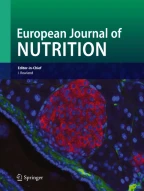Abstract
Background
Average vitamin D intake is low in Finland. Even though almost all retail milk and margarine are fortified with vitamin D, the vitamin D intake is inadequate for a significant proportion of the population. Consequently, expanded food fortification with vitamin D would be motivated. However, there is a risk of unacceptably high intakes due to the rather narrow range of the adequate and safe intake. Therefore, a safe and efficient food fortification practice should be found for vitamin D.
Aim of the study
To develop a model for optimal food fortification and apply it to vitamin D.
Method
The FINDIET 2002 Study (48-h recall and data on supplement use (n = 2007), and 3 + 3 days’ food records, n = 247) was used as the test data. The proportion of the population whose vitamin D intake is between the recommended intake (RI) and the upper tolerable intake level (UL) was plotted against the fortification level per energy for selected foods. The fortification level that maximized the proportion of the population falling between RI and UL was considered the optimal fortification level.
Results
If only milk, butter milk, yoghurt and margarine were fortified, it would be impossible to find a fortification level by which the intake of the whole population would lie within the RI-UL range. However, if all potentially fortifiable foods were fortified with vitamin D at level 1.2–1.5 µg/100 kcal, the intake of the whole adult population would be between the currently recommended intake of 7.5 µg/d and the current tolerable upper intake level of 50 µg/day (model 1). If the RI was set to 40 µg/day and UL to 250 µg/day, the optimal fortification level would be 9.2 µg/100 kcal in the scenario where all potentially fortifiable foods were fortified (model 2). Also in this model the whole population would fall between the RI-UL range.
Conclusions
Our model of adding a specific level of vitamin D/100 kcal to all potentially fortifiable foods (1.2–1.5 µg/100 kcal in model 1 and 9.2 µg/100 kcal in model 2) seems to be an efficient and safe food fortification practise.




Similar content being viewed by others
References
Brown AJ, Dusso A, Slatopolsky E (1999) Vitamin D. Am J Physiol 277:F157–F175
Bischoff-Ferrari HA, Dawson-Hughes B, Willett WC, Staehelin HB, Bazemore MG, Zee RY, Wong JB (2004) Effect of Vitamin D on falls: a meta-analysis. JAMA 291:1999–2006
Martinez ME, Willett WC (1998) Calcium, vitamin D, and colorectal cancer: A review of the epidemiologic evidence. Cancer Epidemiol Biomarkers Prev 7:163–168
Chen TC, Holick MF (2003) Vitamin D and prostate cancer prevention and treatment. Trends Endocrinol Metab 14:423–430
Key TJ, Schatzkin A, Willett WC, Allen NE, Spencer EA, Travis RC (2004) Diet, nutrition and the prevention of cancer. Public Health Nutr 7:187–200
Jacobus CH, Holick MF, Shoa Q, Chen TC, Holm IA, Kolodny JM, Fuleihan GE, Seely EW (1992) Hypervitaminosis D associated with drinking milk. N Engl J Med 326:1173–1177
Blank S, Scanlon KS, Sinks TH, Lett S, Falk H (1995) An outbreak of hypervitaminosis D associated with the overfortification of milk from a home-delivery dairy. Am J Public Health 85:656–659
Scanlon KS, Blank S, Sinks T, Lett S, Mueller P, Freedman DS, Serdula M, Falk H (1995) Subclinical health effects in a population exposed to excess vitamin D in milk. Am J Public Health 85:1418–1422
Vieth R, Pinto TR, Reen BS, Wong MM (2002) Vitamin D poisoning by table sugar. Lancet 23:359–672
Hatchcock JN, Shao A, Vieth R, Heaney R (2007) Risk assessment for vitamin D. Am J Clin Nutr 85:6–18
Bischoff-Ferrari HA, Giovannucci E, Willett WC, Dietrich T, Dawson-Hughes B (2006) Estimation of optimal concentrations of 25-hydroxyvitamin D for multiple health outcome. Am J Clin Nutr 84:18–28
The National FINDIET 2002 Study. Männistö S, Ovaskainen M-L, Valsta L (eds) (2003) Publications of the National Public Health Institute B3:2003
Flynn A, Moreiras O, Stehle P, Fletcher RJ, Muller DJ, Rolland V (2003) Vitamins and minerals: a model for safe addition to foods. Eur J Nutr 42:118–130
Rasmussen SE, Andersen NL, Dragsted LO, Larsen JC (2006) A safe strategy for addition of vitamins and minerals to foods. Eur J Nutr 45:123–135
Goldberg GR, Black AE, Jebb SA, Cole TJ, Murgatroyd PR, Coward WA, Prentice AM (1991) Critical evaluation of energy intake data using fundamental principles of energy physiology: 1. Derivation of cut-off limits to identify under-recording. J Clin Nutr 45:569–581
Nordic Nutrition Recommendations 2004—integrating nutrition and physical activity. Nord 2004:13
Nusser SM, Carriquiry KW, Dodd KW, Fuller WA (1996) A semiparametric transformation approach to estimating usual daily intake distribution. J Am Stat Assoc 91:1440–1449
Nowson CA, Margerison C (2002) Vitamin D intake and vitamin D status of Australians. Med J Aust 177:149–152
Rasmussen LB, Hansen GL, Hansen E, Koch B, Mosekilde L, Molgaard C, Sorensen OH, Ovensen L (2000) Vitamin D: should the supply in the Danish population be increased? Int J Food Sci Nutr 51:209–215
Välimäki VV, Löyttyniemi E, Välimäki MJ (2006) Vitamin D fortification of milk products does not resolve hypovitaminosis D in young Finnish men. Eur J Clin Nutr (advance online publication)
Vieth R, Bischoff-Ferrari H, Boucher BJ, Dawson-Hughes B, Garland CF, Heaney RP, Holick MF, Hollis BW, Lamberg-Allardt C, McGrath JJ, Norman AW, Scragg R, Whiting SJ, Willett WC, Zittermann A (2007). The urgent need to recommend an intake of vitamin D that is effective. Am J Clin Nutr 85:649–650
Author information
Authors and Affiliations
Corresponding author
Rights and permissions
About this article
Cite this article
Hirvonen, T., Sinkko, H., Valsta, L. et al. Development of a model for optimal food fortification: vitamin D among adults in Finland. Eur J Nutr 46, 264–270 (2007). https://doi.org/10.1007/s00394-007-0660-0
Received:
Accepted:
Published:
Issue Date:
DOI: https://doi.org/10.1007/s00394-007-0660-0



